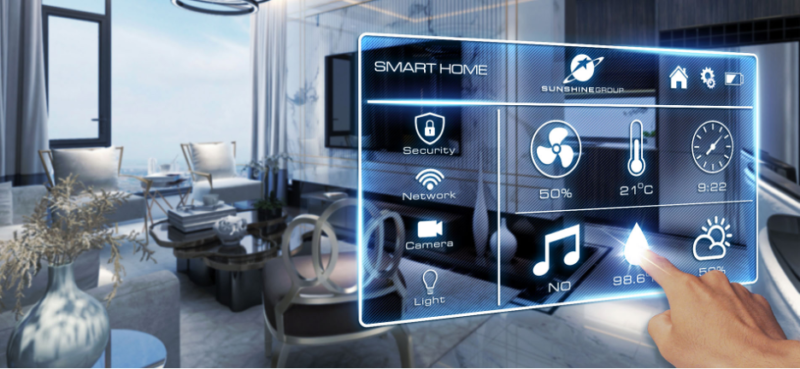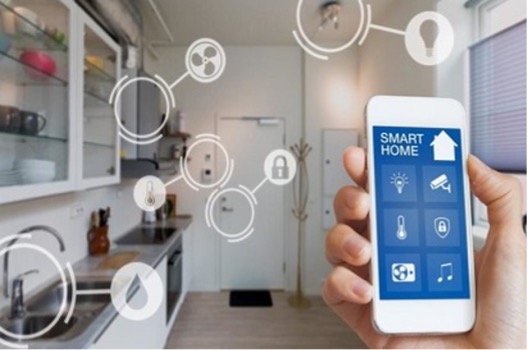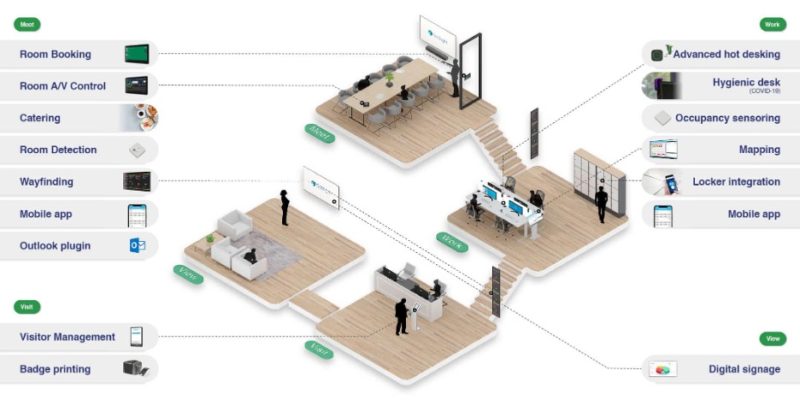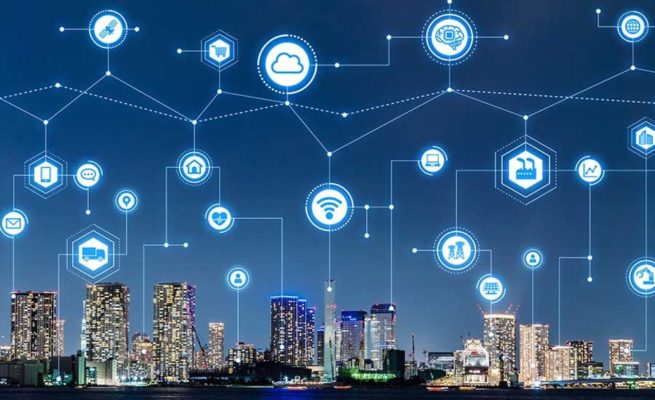
Source: https://erahomes.vn/nha-thong-minh-hay-smarthome-la-gi-thiet-ke-va-van-hanh-nhu-the-nao-la-duoc-goi-nha-thong-minh-.htm
1. IoT Overview
The Internet of Things (IoT) is one of the most commonly mentioned topics in the field of innovative technology in recent years. This technology gained popularity thanks to the benefits it brought to not only individuals’ lives but also enterprises’ businesses. The amount of practical applications of IoT that can be found nowadays is countless but one application that comes to most people’s minds is Smart Home, or in a broader perspective, IoT-based Building Automation.
2. Smart Home
 Source: https://samtech.vn/nha-thong-minh-smart-home-la-gi
Source: https://samtech.vn/nha-thong-minh-smart-home-la-gi
Being the leading application of IoT in improving the living conditions of individuals, Smart Home is no longer unfamiliar to people, especially for citizens of large and innovative cities. Smart Home defines a residence with most household appliances like air conditioners, TVs, refrigerators, dishwashers, entertainment systems together with lighting, security, and camera systems capable of interconnecting and exchanging important data.
Furthermore, it allows human supervision, manual and remote control of these devices through smartphones, computers or by setting a timetable. These systems consist of embedded sensors that collect useful data on the environment and send them to a central hub with microcontrollers that can perform analysis and make adjustments to the system.
3. Smart Office
 Source: https://gobright.com/smart-office/
Source: https://gobright.com/smart-office/
For the border scenario of companies’ offices, the fundamental concept of using sensors and microcontrollers remains consistent. However, multiple improvements are necessary as offices are usually much larger than houses in terms of size. For example, a few air conditioners in a house now become a whole ventilation system in the case of an office. Therefore, it requires more work to install, operate and maintain a smart office system than a smart home system. Nevertheless, offices that fully utilize the power of IoT are more efficient than ever.
There are many technologies that can be incorporated into a classic office to make it “smart”. With the help of sensors, the central hub can detect the appearance of people in a room and turn off lights or other systems when there’s no one left. The optimal working environment can also be created thanks to the measurement and control of temperature, CO2 level, and humidity. Last but not least, smart office security provides a low-cost measure to keep your company safe and secure. This system goes beyond simply controlling the camera, it can utilize voice and face recognition to keep track of the identities of people entering the office and also provide safety alerts in case of emergency.
4. IoT-based Building Automation: Pros and Cons
 Source: https://www.esmagazine.com/articles/100953-building-automation-systems-to-the-rescue-creating-a-remote-world
Source: https://www.esmagazine.com/articles/100953-building-automation-systems-to-the-rescue-creating-a-remote-world
Smart Home and Smart Office’s advantages are easily recognizable. With an intelligent system in charge of controlling electronic devices, users can cut down on energy consumption. Energy usage can also be tracked, allowing users to make changes to their schedules and lower monthly bills. Better living conditions, a comfortable working environment can be created to increase the productivity of employees or homeowners.
However, IoT-based Building Automation is not perfect. One of the main reasons that prevent people from installing this technology is the security of the system. If hackers can infiltrate the devices that are used to control the system, they can have total control over your house or office, and other crimes may occur. Besides that, personal information leakage is another major concern for Smart Home and Smart Office. There have been cases where webcam and home security footage are leaked on the Internet.
5. Conclusion
Despite the obvious benefits of IoT-based Building Automation, many people are still not convinced enough to invest in this novel technology for their house or office. Having a smart home or smart office is, however, more than just the ability to turn on or off lights. It means a more efficient operation, a more pleasant home to live in, and it can go above and beyond your expectation.
6. References
https://internetofthingsagenda.techtarget.com/definition/smart-home-or-building
https://www.iotforall.com/iot-smart-office-applications
https://www.intechopen.com/books/internet-of-things-iot-for-automated-and-smart-applications/smart-home-systems-based-on-internet-of-things
https://hackernoon.com/iot-matters-in-2021-iot-enabled-smart-office-automation-to-work-and-collect-data-human-free-je1b33j1
